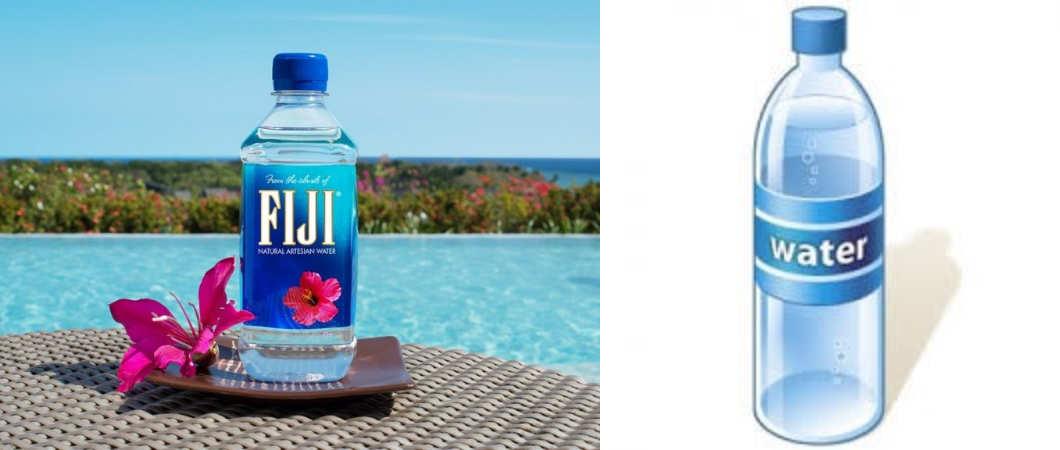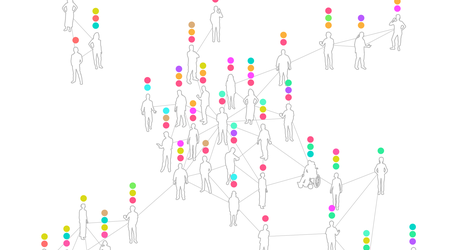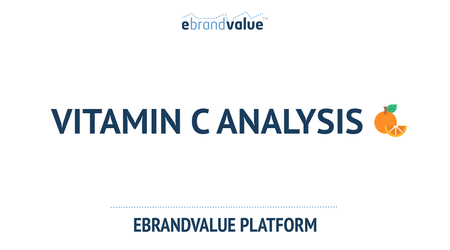What is Brand Equity?
Brand equity is the added value that a brand endows a product. The difference between the value of the brand to the consumer and the value of that product without that branding will provide the brand equity. For example, imagine that you are shopping for a bottle of water.
As an example, consider water. From a functional point of view, to start with, you need water that is safe to drink. Probably, you may not accept unknown water from strangers even when it comes for free. You may want to pay a price to feel safe and go to a supermarket to buy one even though there is free water offered to you. That price difference can be attributed as part of the brand equity of a supermarket. Assuming that both the regulators and the supermarket have done their jobs, it should be perfectly healthy to drink that water you will find on the supermarket aisles. Still, when you look at the aisles of a supermarket you will see bottled waters, probably some with no brand names but with labels representing the generic product category. These generic water bottles will also be priced less. On the other hand, some bottles will have specific brands, with potentially much higher price tags. What are the differences that come with the branded water bottle to justify this price difference, even though, functionally, they are both safe and healthy?

To start with, there is taste. Although there is still an argument that pure water is tasteless, different brands can offer you a consistent expectation of taste and texture in your mouth that you are comfortable with. Here, consistent is probably the more operative word. In addition to that consistency benefit in the physical product, there are many other personal, social and image related benefits that come with that brand. Take Fiji water for example. The fact that it may provide, for example, that untouched island / exotic water experience, its unique shape of the bottle, celebrities pictured when drinking Fiji water, or, the refined elite status it may invoke when drinking and image benefits when seen socially, previous experiences may justify a premium for Fiji water. Thus, all these combined benefits for Fiji water versus its generic water alternatives will establish its brand equity.
Comparing a brand against a generic white-label product may be easy to justify the value. But, when we have many competing brands how can we compare one brand’s equity versus other brands?
In order to compare many different brands and investigate how and when brand equity investments make sense, we need a more careful analysis. We can collect the value creating brand equity elements for a brand under these categories:
1. Brand Awareness,
2. Perceived Quality,
3. Brand Associations (some people call this brand image), and
4. Brand Loyalty
A strong brand will have a strong awareness and perceived quality. Being the first brand that can be named top of the mind (without any hints) in the product category is usually a good indicator of having a strong awareness.
The marketers like to talk about perceived quality. The real quality may be irrelevant if the users do not have a positive, high quality perception. In addition, the perceived quality includes use cases and the real use experiences may differ from the engineered quality. For example, the end-user design elements may not be perceived as high quality by certain segments in the population.
The brand associations should be unique, favorable, yet strong. For
example, just because a brand made heavy investments on sponsorships,
spoke persons or portraying certain lifestyles in the advertisements, if
these do not create a strong and unique association that the consumers
can easily count or remember these may not be creating the required
value and may not influence the brand equity.
In addition, we need customers who have a strong loyalty towards that
brand. That is, they keep on buying and using the brand with every
opportunity.
As can be understood, just because a brand makes investment does not mean that the brand equity will be easily created. Essentially, we need to have a strong impact on the ability for a brand to differentiate, create knowledge, be relevant for the users, and the brand need to be esteemed.
What is Brand Affinity?
Brand affinity is an individual’s brand preference given a product category. There are difference ways to identify the brand affinity of an individual. To start with, we can ask the individual, which brands the individual knows, can count (positive) attributes, likes and prefers over competing alternatives given a buying opportunity. Or, we can simply look at the individual’s engagements and generated contents about the brands in the category.
Brand equity is an overall brand specific concept and represents the overall value difference that brand justifies, brand affinity, on the other hand, is an individual consumer specific concept. The table below summarizes these differences.
| Brand Affinity | Brand Equity | |
| Measurement Level | Individual Consumer | Overall Brand |
| Importance | Hints the preferred brand for the given consumer | Justifies the value the brand is seeking to get in the market |
| Dimensions | Past experiences, the overall preference over competing alternatives, ability to create word of mouth | Awareness, perceived quality, associations, loyalty |
How to Make the Best Use of Brand Affinity and Brand Equity?
Brand equity is important to understand whether the investments create a return on the brand. Return on Marketing Investments (ROMI) is an important concern for many of the CMOs and brand managers. Without justifying the proper return on the required investment, many marketers find it hard to justify the budget to the upper management, their CEOs and boards. This result in immediately cutting the much needed marketing budget and creates a perception as if the marketing spending is ineffective.
Essentially, this problem arises due to the brand’s inability to track its brand equity, identify the brand equity increasing elements and tie these to the immediate and future sales.
Many of the metrics become meaningless if they cannot be tied to the immediate or future sales. This requires marketers to create individual-level and meaningful KPIs that correlate with sales. Brand affinity fulfills this function. By looking at the impacts of the overall brand investments on many different individuals/ segments brand affinities, it is possible to create meaningful KPIs that can tie the brand equity to the much needed sales.
What is eBrandValue’s difference?
At eBrandValue, we look at brand equity bottom up. That is, we focus on individual, consumer-level brand affinities and identify a brand’s equity by summing up over all the users that we observe in social.
As we have seen above, essentially, each brand tries to have a strong brand equity while acknowledging individual consumers’ perceptions and guarantee its future by creating loyalty. Yet, loyalty also is an individual-level phenomenon. It is impossible to think about brand equity without a good grasp on individual-level or consumer-specific impacts.
eBrandValue, using a big-data infrastructure, can identify and calculate millions of individuals’ brand affinities and identify a brand’s equity in real time. This enables Marketers to check the effectiveness of their current strategies and decide whether to step more on the gas pedal and spend more on the current campaigns, kill the current ones because of their limited effectiveness and create new campaigns, or, even shape their product strategies. eBrandValue platform provides many comparisons and trends that shape brand affinities. By comparing an extensive database, creating new communication and product strategies and formulating competitive responses to the market developments become possible.
To learn more about eBrandValue Platform, and how such metrics influence brand value, contact us using the form below.







